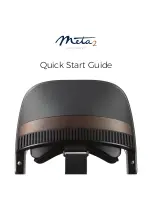
CAUTIONS (continued)
2. Use in Impulsive Noise Areas
Federal Law requires the following statement:
"Although hearing protectors can be recommended for protection against the harmful effects of impulsive noise, the noise reduction rating
(NRR) is based on attenuation of continuous noise, and may not be an accurate indicator of the protection attainable against impulsive noise, such as
gunfire."
Firing range instructors and frequent shooters, more than 100 rounds in an eight hour day, should use ear plugs in addition to the device to
which this instruction sheet is attached, for maximum hearing protection.
3. Proper Fit
Proper fit of this device is critical to its noise attenuation effectiveness. Consult the instructions below for proper fit.
1.
For models worn over-the-head, open the headband adjustment all the way and put the hearing
protector over your ears. Push the headband down until the headpad (headband) rests comfortably
on top of your head. Move the earcups slightly up or down or from side to side until you feel you have
maximum attenuation.
2.
For behind-the-head or under-the-chin use, close the headband adjustment and follow the same fitting
procedure as noted above. Should you feel the need for over-the-head support, you may purchase the
velcro adjusted overhead support strap (P/N 10370G-03).
3.
The use of eyeglasses will reduce the attenuation afforded by this device. Use the thin temples on your
glasses. Thin temples keep noise leakage at a minimum. Use "Stop Gaps", P/N 12500G-02; they are
inexpensive and effective in restoring some of the attenuation which you would otherwise lose.
4. Maintenance and Cleaning
In order for your hearing protector to perform properly, always comply with the following:
1.
Never alter or modify your hearing protector. If you re-form the headband or muff, cut or punch holes in the ear
seal, drill or punch holes in the ear cup or insert, or paint or coat the device, you will seriously jeopardize the
hearing protector's performance and hearing damage could occur.
2.
Seek repair or replacement of the hearing protector, immediately, if you see a defect, such as any sign of
cracks or splits in cups, seals, or headbands.
3.
Follow the manufacturer's recommendations for storage and cleaning. Storage in direct sunlight or at high
temperatures, or cleaning in unrecommended cleaning solutions, may shorten the useful life of the hearing
protector.
4.
Each individual's body chemistry is different. Perspiration, body oils, and hair grooming cosmetics may effect
the hearing protector materials; loss in elasticity or softness of ear cup seals and of the foam pads inside ear
cups may result. Replace parts immediately, if these signs of wear occur.
CLEANING INSTRUCTIONS
1.
Hearing protectors should be cleaned regularly using mild soap and water. Sponge off headpad and ear seals,
taking care to rinse thoroughly.
2.
Communication headsets should be cleaned in the same manner. DO NOT IMMERSE IN WATER.
Most importantly, always wear your hearing protector in areas that have been identified as hazardous noise locations!




















